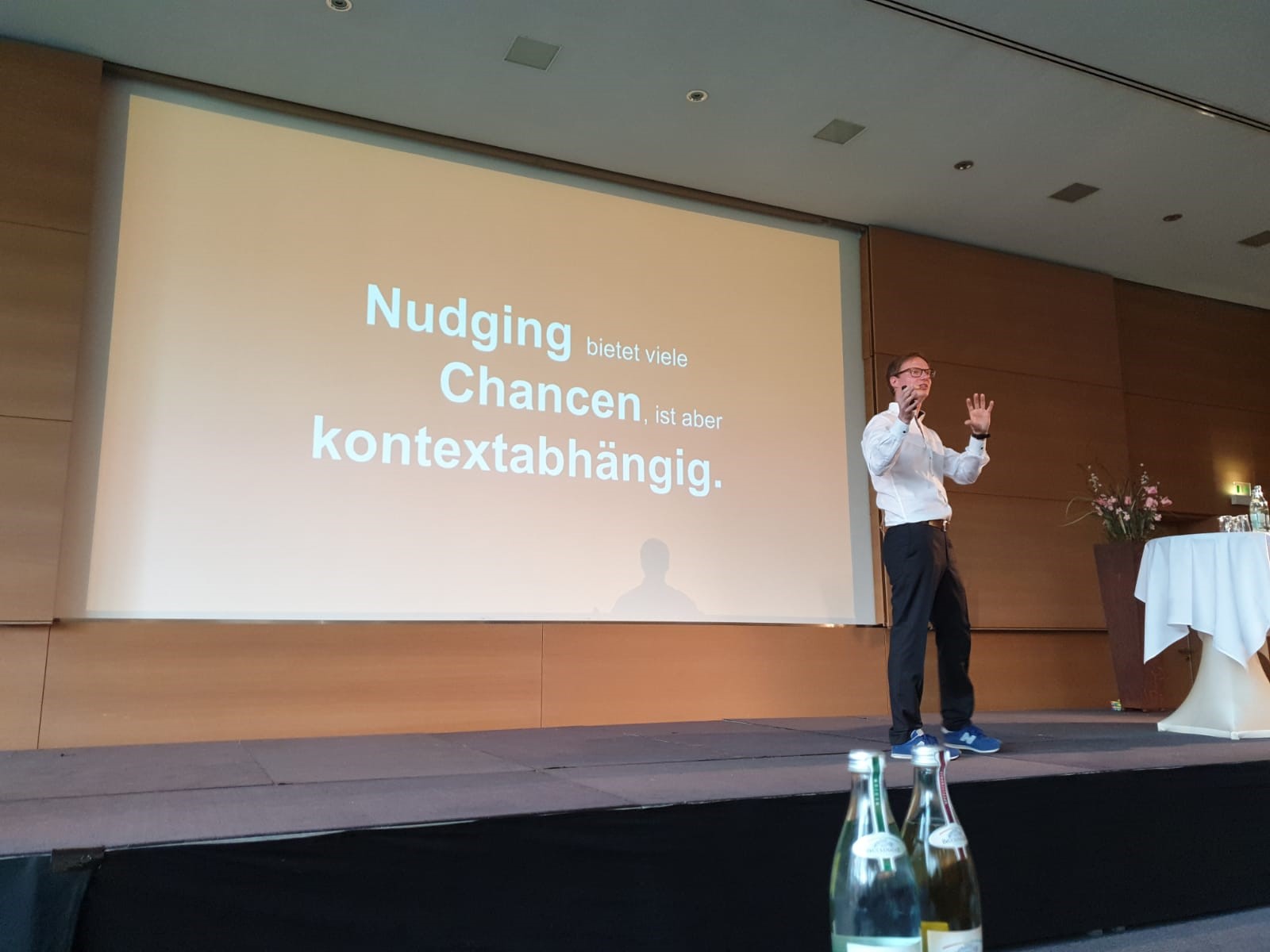Prof. Thorsten Kliewe was invited as an opening keynote speaker to the BVMW marketing conference about Nudging. Together with Eva Sormani, he prepared a presentation with a strong scientific background to explain the two main questions: (1) What is nudging? (2) How can I use it?
The conference took place in the Mövenpick Hotel Münster on 02.04.2019 and was attended by 250 participants. We would like to thank BVMW for inviting us. Furthermore, we would like to thank the experts and participants for the interesting discussions during the event.
What is nudging?
Nudging is not new, you might have used nudging before. The term nudge was coined by Thaler and Sunstein in 2008 in the bestseller 'Nudge'. Nudges are behavioural approaches that steer people in a certain direction without restricting their freedom of choice, which do neither require restrictions nor monetary incentives and can be considered inexpensive. Nudging received increasingly attention after Richard Thaler won the Nobel prize in economics.
We strongly believe that Nudge is not a hype, something that will fade in the next few years, as Daniel Kahneman got awarded the Nobel prize in 2002, for one of the theories behind nudge. In his bestseller "thinking fast and slow" he describes that we have a fast and slow thinking process. When we (humans) think fast, our brain takes short-cuts by applying rules of thumb. These short-cuts are called biases and facilitate fast thinking which is error prone. When you want to experience this yourself, try the baseball and bat riddle* or take part in a Stroop task.
How can I use it?
In nudging, biases are used to predict behaviour. As written by another great scientist in the field, Dan Ariely, who is not (yet) a Nobel prize winner, humans are 'predictably irrational'. For example, social proof would strongly affect decisions. When humans see a "most chosen option" or "reviewed with 8.4/10" they will trust the crowd, whoever they are, when they make fast decisions. This could easily be applied in online shops or flyers as well.
For all these biases, there is scientific evidence, however; the effect might be different when the context changes, therefore nudges need to be tested like any other marketing strategy. Moreover, nudges should be used to guide people in the right direction, to build long term relationships rather than to have a one-time sale and a client or costumer who regrets the decisions and would never return.
*the ball costs 5 cents: x+x+1=1,10 | 2x=0.10 | x=0.05






